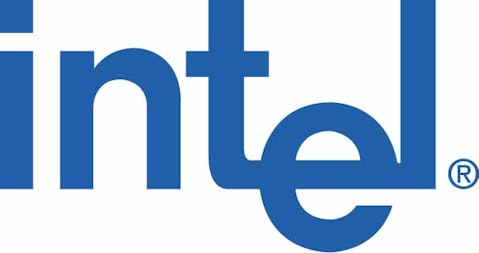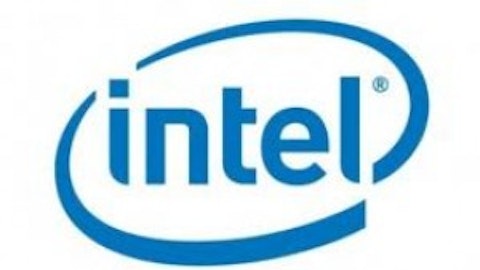A good metric for looking at how a company has done over the past few years is to look at their compound annual growth rate, or CAGR for short. Recently I have been looking at this figure a lot more when I research great dividend paying stocks for investments. I use the number that the CAGR formula pumps out in conjunction with the yield and the yield growth to check if a company is worth a further look.

((End-Beginning)^(1/time))-1
So, let’s say we’re going to use this formula with the profits over the last five years on Intel Corporation (NASDAQ:INTC). Well, we already have the time frame: five years. The next thing you’ll have to do is seek out some historical values, and I typically pull mine from MSN Money. Looking up Intel on that website, I can see their 2007 net income came in at $6.98 billion and their 2012 net income was $11.01 billion. If we take our three figures and plug them all in we get something looking like this:
((11.01-6.98)^(1/5))-1
That equation above comes out to 9.45%, which represents Intel Corporation (NASDAQ:INTC)’s yearly growth in net income per year over the last five years. You can use this formula on any value that you can find in the income statement or balance sheet of any public company, and it actually can give you some very valuable information.
How I Use It
I take that formula above and use it in conjunction with some high dividend paying stocks (they’re my favorite kind). Let’s take a look at another stock, one that I own, and one that pays a pretty high dividend: Altria Group Inc (NYSE:MO). Altria is a tobacco products company that has one of the strongest dividends available. It is, of course, a sin stock, but that hasn’t stopped their share price from growing over the decades to the levels it is at today.
Let’s once again use the five year figure from the Intel Corporation (NASDAQ:INTC) example and head on out to find our historical data on Altria Group Inc (NYSE:MO). Net income at the company was $3.13 billion in 2007 and was $4.18 billion when FY 2012 rolled to a close. There’s some growth there, but how much? My Excel calculation tells me that the CAGR (by the way: we typically use CAGR on invested amounts. It’s the same calculation, so I’m giving it the same name) is 5.96%. Now that I have that value, I add on top of it the dividend yield, which for Altria Group Inc (NYSE:MO) is 5.19%. Adding those two numbers gives me 11.15%, above the 10% threshold that I typically look for.
If that CAGR value and the yield go above 10% I look into the company a little further. Those companies have growth, and they have a decent yield carrying them along too. If they’re pushing above 12% then they’re definitely worth a further look. I tend to avoid companies that sit below 8%.
If we were to look at Altria Group Inc (NYSE:MO) a little more, we’d see a nice, solid company that has been raising their dividend by a pretty hefty amount each year. The combination of the above calculations, the growing dividend, and some deeper diving into the financials were the reasons that I bought this stock. I never would have taken a peep inside if it didn’t hit my 10% threshold, though.
Here’s A REIT I’m Looking at Now
Following the same principles that are outlined above, I found Omega Healthcare Investors Inc (NYSE:OHI). I know I have written about this company in the past, but I have been exploring even more since then. If I use the same calculation as above on OHI then I get a CAGR of 12.29%! That’s over my threshold right away! Throw in the 6.44% yield and we’re at 18.7%!
This stock is a five star rated CAPS player, it’s liked by analysts, and the dividend is outrageous. The P/E may seem a little high, but I feel the growth that this REIT has been offering, and the incredible dividend checks they’re writing out to investors, it’s worth it.
If you don’t have a REIT in your portfolio, I would definitely check out Omega Healthcare Investors. If you have any feedback on my dividend-finding method, let me know. It’s something I’ve been playing about with and I’d love some Foolish feedback on it!
The article Using Math to Find Top Dividend Stocks originally appeared on and is written by Ash Anderson.
Copyright © 1995 – 2013 The Motley Fool, LLC. All rights reserved. The Motley Fool has a disclosure policy.




